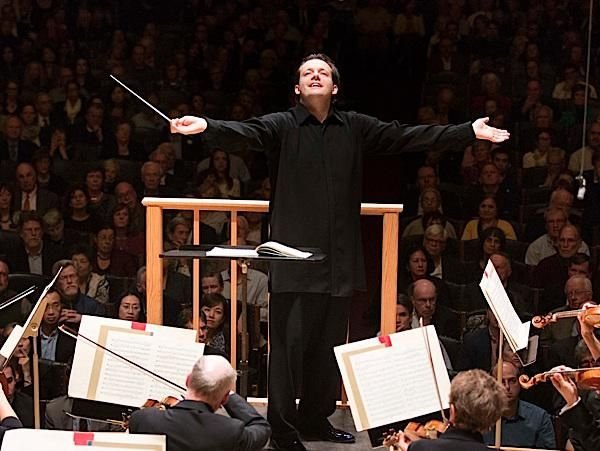Nelsons, BSO: Artistic Synchrony in Mahler 5

As with all of Mahler’s symphonies, performing the fifth is a task which demands both endurance and virtuosity to pursue 80-minute score through to the final movement. Moreover, the piece requires an artistic synchrony across the entire orchestra which either establishes the rendition as formative or as merely an attempt. Andris Nelsons lead the Boston Symphony Orchestra to a rousing exhibition of the former last year, November 15-17, 2018.
Through a translation of Nelson’s clear instructions, the performers were able to transmit Mahler’s notes seamlessly from their sheet music to the audience. This is often all the harder with the Fifth, considering the continual overlapping nature of lyricism that Mahler weaves in and out of parts across several sections in order to accomplish a single overarching line of musical thought. Nelsons was able to key into this robust challenge throughout the first movement, a slow, somber funeral march, with the help of principal trumpet Thomas Rolf’s near-flawless execution of the infamous opening trumpet solo.
The motioning of the low strings in the cajoling, livelier second movement proved to be a welcome, energetic transition. The first showcase of the soon-to-be featured French horn section went dependably well. Aiming for playful transitions from running notes in the brass, to brief, biting woodwind exclamations, Andris was able to navigate the second moment deftly, although sometimes at the price of consistency throughout some of the sections of the orchestra when comparing note lengths, articulations, and finer elements of phrasing.
The opening of the scherzo always brings a sense of tension, not just because of the music, but because of the physicality of the horn players that soon become the axis on which the entirety of the musical message of the orchestra relies. For this particular Thursday, there were incidental cracks from the start, but nothing too reaching, given the number of horns and the volume of the part, and the clarinets and trumpets nevertheless were able to work with the horns to create an overall sense of stability and cohesion. The open, exposed horn cadenzas reflected this pattern: a few moments of triumphant breadth and uninterrupted timbre occasionally marred by an occasional mistake from one of the solo horns, but all the while, the forceful, commanding and wonderfully responsive accompaniment from the orchestra never failed to provide support. The brief moments of church-like chorales throughout the third movement were particularly notable for the way in which Nelson worked with the orchestra: his baton, nearly undetectable, evoked just enough music to surround the delicacy of the moment with a solemnity and urging for abbreviated volume that highlighted the contrast its brevity posed for the sections surrounding it.
As always, the Adagietto was meaningful and full, providing an appreciated respite and moment of introspection throughout the turmoil of the long symphony. After a brief pause and recollection before the movement began, the orchestra executed it perfectly, in calm and even interwoven voicing with the all-important harp underpinnings. Satisfyingly moving, the Adagietto lead into the Rondo finale that would propel the symphony, the audience, and the project as a whole into completion, and from the first proclamation of vivid awakening from the solo horn to the final orchestra-wide closing crashes, the final movement brought on immediate cheers and ovations.
With the rehearsal schedule of the BSO being what it is, it’s always impressive to hear the group pull off a work as densely complex and nuanced as Mahler’s Fifth Symphony, and at the same time, create an innovative interpretation of the music, as well. One had the sense that Nelsons was able to tap into that talent throughout the symphony, and elicit a brand of passion and persistence that shaped Mahler’s first evolution out of his opening tetralogy as one of energy, emotion, and exhilaration.
Topher Colby is a producer for WHRB Classical. You can hear his upcoming feature on the Dorian Mode starting March 6th at 6-7pm on Wednesday evenings.